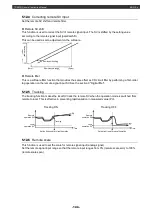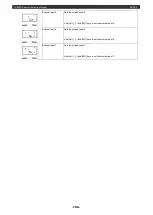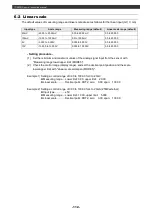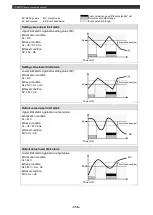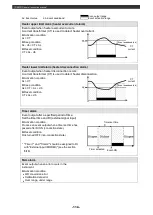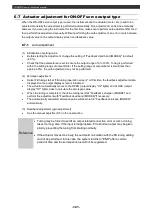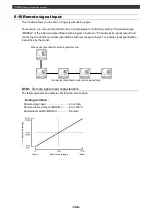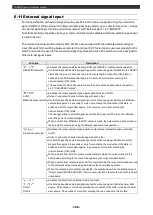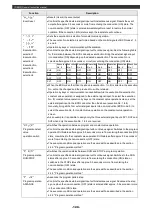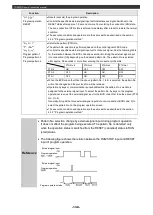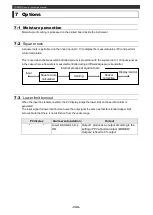
[DB600] General instruction manual
- 119 -
6-6
PID control
This is the most common control algorithm which are combined from three controls: P (proportional), I
(integral) and D (derivative) controls.
PID constant is used to associate the deviation (difference between PV and SV) with the output level.
A good control result can be obtained by optimizing P, I and D values.
6-6-1
P control
This is a basic operation of PID control. It affects responsiveness and stability significantly.
The output level is inversely proportional to the deviation (for heating control).
Setting a smaller P value causes larger variation in output with small deviation. It causes the control
result in a vibrating manner but the offset becomes small.
Setting a larger P value causes smaller amplitude of vibration in the control result. It improves
stability but degrades response.
Setting P to 0% enables two-position control operation.
Unsteady due to occurrence of cycling when proportional
band is too small.
Control result steady when proportional band is appropriate,
but likely to deviate a little from SV (offset).
Steady at a value far off SV when proportional band is too
large.
6-6-2
I control
I control is used to eliminate deviation.
This can eliminate the offset generated in P control operation but it is decreased stability due to
phase lag.
Setting "0" is equal to ∞ (infinity).
I control is normally used with P control to perform proportional-integral control (PI control).
Prompt response but overshoot or vibration is likely when
integral time is too small.
Integral time is appropriate.
Time required eliminating deviation when integral time is too
large.
Integral time means the time required for I control to make the same
output variation as P control.
Setting a larger integral time changes output gradually, and a smaller
integral time changes output rapidly.
Offset
Time
Time
Increase
Output
Decrease
Integral time small
Integral time large
Output variation by I control
Output variation by P control
Integral time
Time


